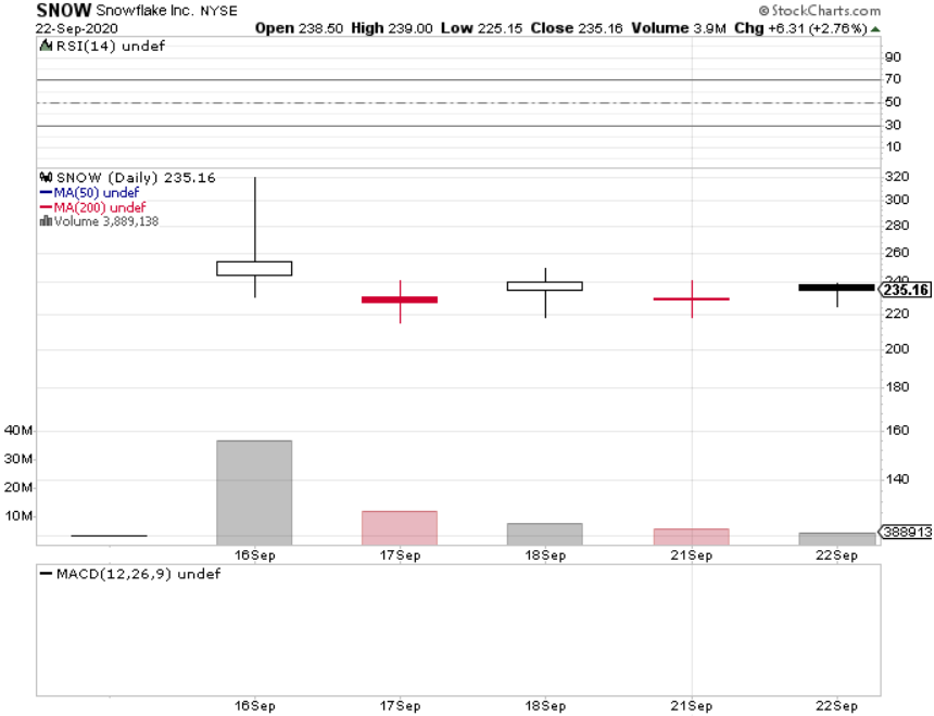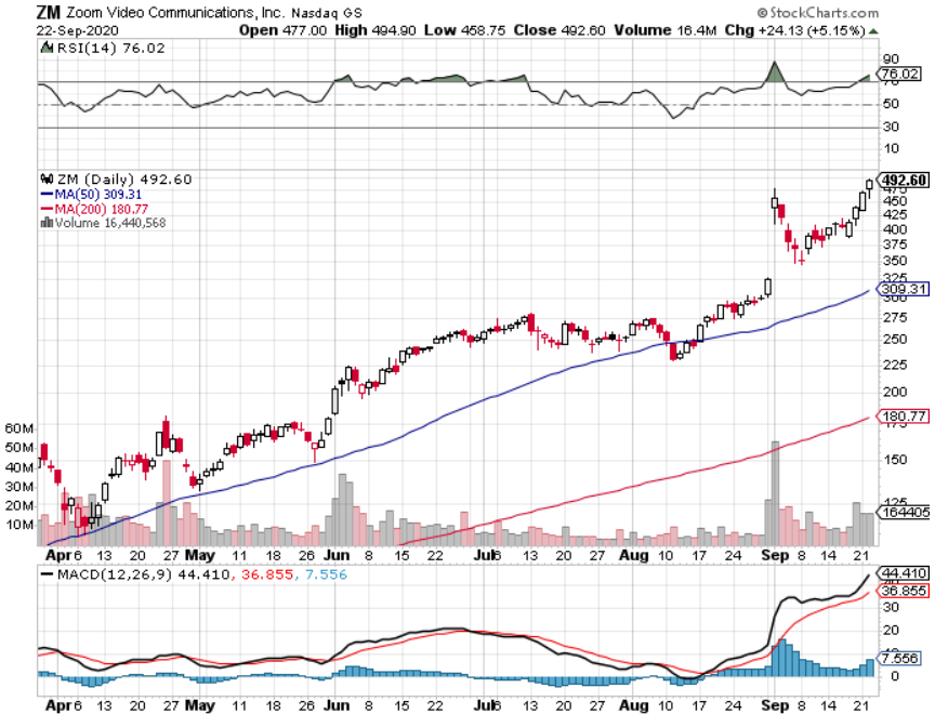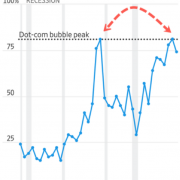The good news is that investors are thirsting for new cloud IPOs boding well for tech firms like Airbnb who plans to go public later this year.
The long-term health of the U.S. tech sector is on solid footing.
Most recently we had Snowflake (SNOW) who is a cloud provider and has an impressive enterprise business.
The public cloud is the data storage unit which literally everyone stores their operations on that has benefited from a massive wave of digital migration.
Many of the cloud-targeted tech firms of recent years have been 10-baggers and have dominated the overall market's returns.
Typically, these companies trade at high premiums, and rightly so, because of the corresponding growth trajectories and Snowflake is no different.
The stock has doubled after less than half a month as a tradable market-moving instrument.
Even by the standards of the most expensive software companies on the Nasdaq index, Snowflake is not cheap, although it’s a growth monster.
Snowflake was valued at $12.4 billion in February and even has investor Warren Buffett, the Oracle of Omaha, among its investors.
Buffett dove headfirst into tech investments in Apple and even some Indian fintech firms as well.
Snowflake is the largest software IPO on record and the largest since Uber's $8.1 billion IPO in May 2019.
The firm was striving for a valuation of $20 billion. In total, Snowflake has raised $1.4 billion from investors including Sequoia and Iconiq Capital.
Snowflake even makes the high-flying Zoom (ZM) Video Communications look cheap which is hard to do.
Zoom is growing three times faster than Snowflake, but trades at roughly half of Snowflake's price-to-sales ratio.
Zoom is also profitable, whereas Snowflake is a huge loss maker and that is a staple of many tech startups. This is an economic environment that is more conducive to profit drive companies instead of the tech model of promising future growth.
Snowflake is over four times more expensive than cloud company Datadog.
Snowflake's market is thought to be bigger than most other niche software applications, and therefore it may have a longer runway. In the regulatory filing, Snowflake claimed its total addressable market was around $81 billion.
Along with many other growth companies, Snowflake's ultimate margin potential is still hard to fathom and more passengers are starting to arrive in the sector than drivers.
Even worse, Snowflake not only competes with legacy data warehouse companies such as Oracle (ORCL) and Dell but also with products from the cloud infrastructure company it collaborates with.
Since shares have already doubled, I do believe that investors will need to wait for a pullback to put money to work in Snowflake.
The company said it had about 3,100 customers, including 56 clients that contributed about $1 million in a 12-month period.
Even with the pricey valuations, Snowflake is the pre-eminent cloud listing of the second half of 2020 and its enterprise business is sustainable.
If a broader sell-off drags this name down into the $180s, pull the trigger and start wading into this one.
The stock is currently priced as such that it represents flawless execution quarter after quarter for many years, and they would have to live up to lofty expectations to grow into its valuation.
While the management is stellar and is known for its execution, the odds of Snowflake's stock faltering are high because of the high bar.
Keep this one on your hot list because with all the variables waiting to pull down the market, there will be a time when the price is right in Snowflake.




